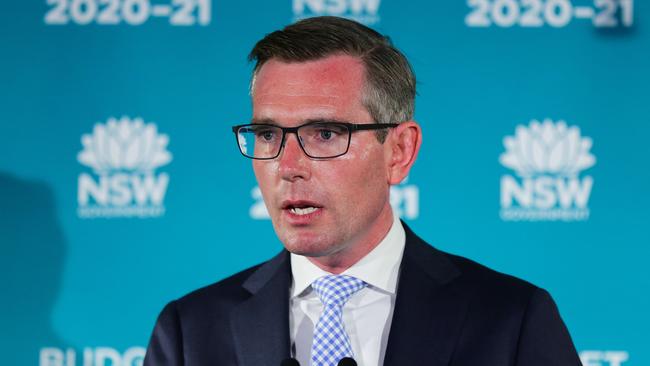
I must be about the only economics commentator in Australia who is not jumping for joy at the announcement by NSW Treasurer Dominic Perrottet to phase out stamp duty on properties and replace it with an ongoing land tax.
One commentator enthusiastically declared: “NSW is reforming property taxes with a superbly innovative switch from stamp duty to land tax.” Another used the term “visionary”.
John Freebairn, Ritchie chair of economics at the University of Melbourne, said “this one single reform could produce the biggest possible gains of any tax reform, state or federal”.
The plan involves giving purchasers a choice of paying stamp duty upfront or paying an ongoing tax based on a fixed component plus a percentage of the unimproved value of the property. A figure of $2500 a year is quoted as typical.
The top 20 per cent of properties by value will not be included in the plan, with those purchasers still required to pay stamp duty. Once an owner opts to pay the annual tax, that property will always be subject to the tax. It’s a one-way street.
Using assumptions-replete modelling, the Treasurer claims the scheme will “inject more than $11bn into the NSW economy in the first four years and lift NSW gross state product by 1.7 per cent over the long term”. (Take this modelling with a tonne of salt.)
It’s close to an act of faith among economists that stamp duty is so damaging to economic efficiency that its replacement with a perpetual land tax is a no-brainer. Don’t worry about the details or who actually pays the stamp duty (buyer or vendor), or the effect on house prices — it must be a good thing.
Let me go through some of the arguments about the switch from stamp duty to land tax and it will be clear that some of the assumptions that are needed to conclude that the switch is a definite plus are not necessarily met.
One of the problems in writing about this topic is that so much of the research has been commissioned by self-interested parties. You can read the consultants’ reports, but the key is that some part of the property industry has funded the work.
Let’s be clear here: the property industry, including real estate agents, will always support any measure that increases the turnover of properties. They don’t care what the impact on economic efficiency is; it’s all about their bottom lines.
While stamp duty is technically paid by the purchaser of the property, in reality we are not really sure where the true burden of the tax falls given the scope for the final transaction price to vary.
Take the case of a couple who are prepared to pay $1m inclusive of stamp duty for a house. Now they don’t have to pay stamp duty, will they still be prepared to pay $1m? They will be up for annual tax but they really want the house. In this case, the vendor is the sole beneficiary, not the buyer.
Of course, there are lots of different circumstances depending on the state of the local housing market and the particular property. But the idea that this tax shift is an unalloyed gift to home buyers is a myth.
If you are intending to stay in a property for some time, it might actually be rational to pay the stamp duty (you can borrow the money at less than 2 per cent) rather than opt to pay the land tax.
As long as the value of the stamp duty is less than the expected cumulative (discounted) value of future land tax bills, it makes sense. It also may boost the value of the house on resale because the new owner still will have the choice between paying stamp duty and paying the annual tax.
And here’s an important rub to the story: should NSW citizens trust future governments in relation to hikes in the annual land tax? Aside from any political consequences, there will be nothing to stop a state government from increasing the fixed component, for instance, and those homeowners who have opted to pay the tax will have no choice but to pay.
Three or four grand mightn’t sound a lot but it will stress quite a few household budgets.
As for Perrottet’s claim that the shift will be a boon for first-home owners, he refuted the suggestion prices could rise because of the pent-up demand in anticipation of the tax switch by alluding to the “modelling”. We all know how reliable modelling is.
The truth is that unless there is some reduced demand elsewhere in the system, there is every possibility that house prices will rise and block out new home buyers for this reason alone. The new system also will create a weird distortion at the cut-off point above which home purchasers will still be liable to pay stamp duty. If the switch is so good, why exempt them?
Perrottet might have been better advised to take a look at the stamp duty and land tax arrangements that NSW operates. The rates are too high (much higher than the other states), there are lots of distortions and it is too complicated. That would have been a good place to start.



